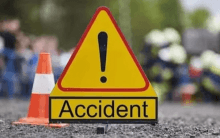Japan restarted a second reactor at the Sendai nuclear plant on the southwestern island of Kyushu on Thursday (15 October), as the government pushes ahead with an unpopular return to atomic energy in the wake of the 2011 Fukushima disaster.
The restart of the Sendai No 2 unit marks progress for Japans utilities, which have been hit by huge losses after being forced to shut down nuclear plants for safety checks.
Weve actively implemented various safety measures including disaster prevention schemes to never let anything like the Fukushima Daiichi nuclear accident happen again, chief manager of Sendai nuclear plant Rei Sudou said, after his staff switched on the dormant reactor No 2 at 10.30am.
The unit will begin power generation on 21 October and is expected to enter commercial operation from around mid-November. Kyushu Electric Power Co restarted the No 1 unit at the Sendai plant in August after approval from the countrys atomic regulator came following two years of reviews and equipment checks.
Anxious to cut fuel bills, Prime Minister Shinzo Abe wants atomic power to account for 20-22% of the countrys energy mix by 2030, but the goal is widely seen as unrealistic and opposition to nuclear power remains widespread. Opinion polls have consistently shown strong opposition to nuclear power among the public, even as electricity bills surged following the switch to expensive fossil fuels.
We will continue to restart nuclear reactors that meet whats called one of the most strict safety standards in the world, respecting the judgement of the governments nuclear authority, Chief Cabinet Secretary Yoshihide Suga said during a regular news conference on Thursday.
The government is unchanged with its determination that we should restart nuclear reactors that meet the safety standards as were currently relying on old fuel generators that are forcedly put into operation, Suga added.

















